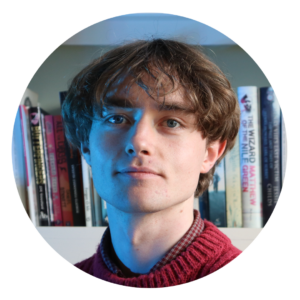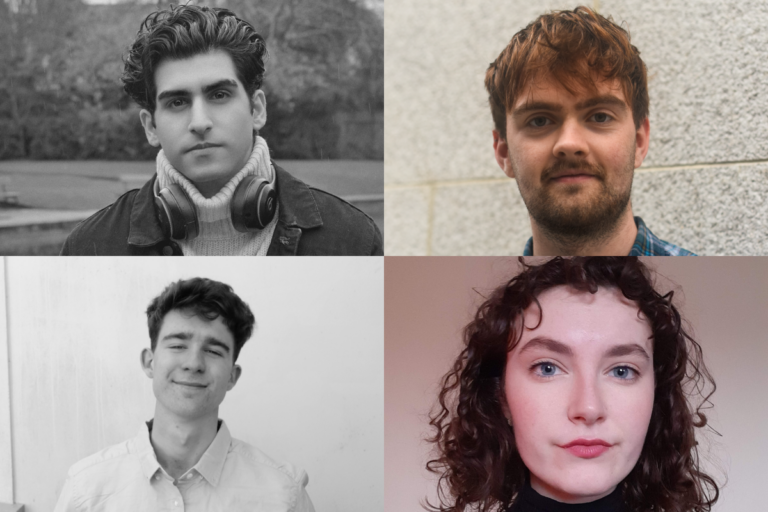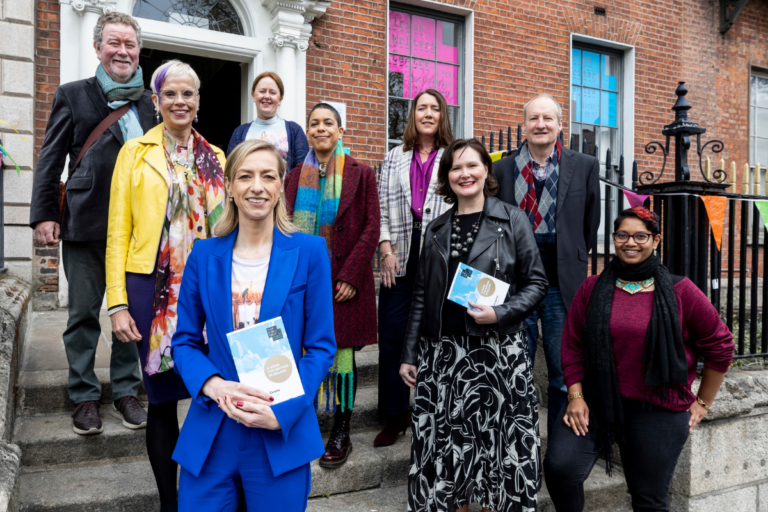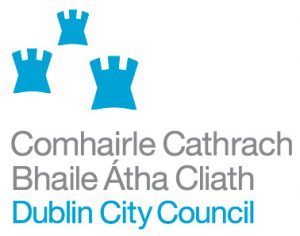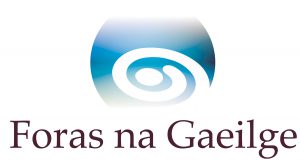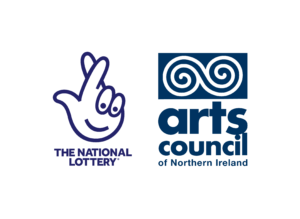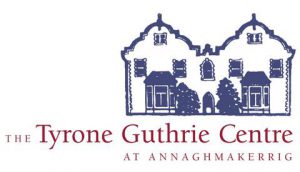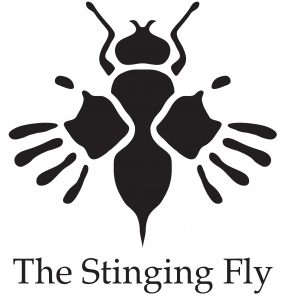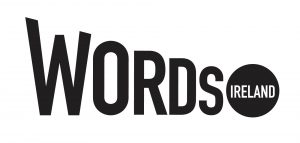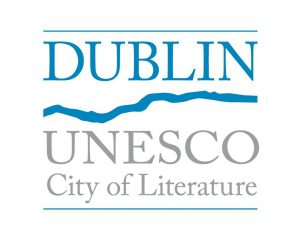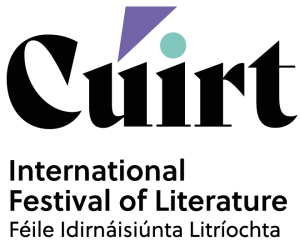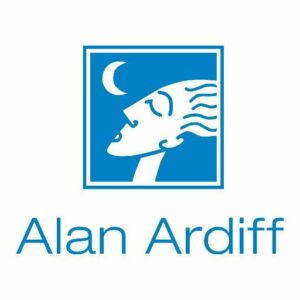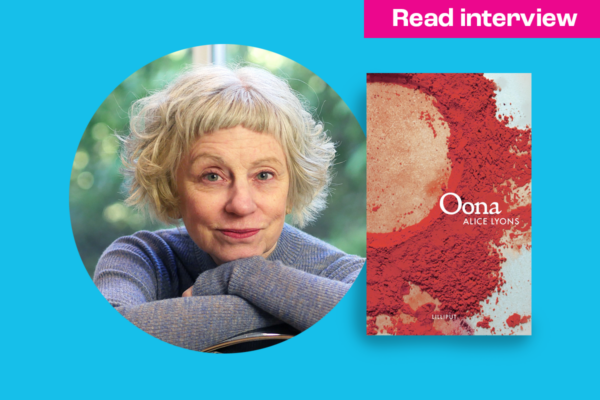
09 June, 2023
“The book would lead the process rather than me”: Alice Lyons on poetry, Novel Fair and her O-less novel Oona
Interviewer: Jack Delaney
Jack Delaney is a writer and theatre-maker from County Meath. He joined the Irish Writers Centre as an Arts Administration Intern in March 2023.
Back in April, we published an interview with writer and 2021 IWC Novel Fair winner Bryan Moriarty about his debut novel, Sounds like Fun. Now, we are delighted to present a conversation with poet, visual artist and 2019 winner Alice Lyons, who successfully pitched her debut novel, Oona, at the IWC Novel Fair, leading to its publication with Lilliput Press in 2020.
Alice Lyons is a multi-disciplinary artist whose work encompasses poetry, films and public installations. The fact that she has now written a novel – let alone a novel as strange and singular as Oona – should come as no surprise. On the surface, it tells the story of a perceptive young woman growing up in the affluent suburbs of mid-twentieth century New Jersey. Its text is made up of ninety-nine individually titled fragments, some of which run up to eight or nine pages, others just a line or two. Most notable, however, is the fact that Lyons’ novel is a lipogram: a text composed with one or multiple letters of the alphabet missing, the result of a type of constrained writing technique primarily associated with the Oulipo group – a motley crew of writer-mathematicians that included Italo Calvino and Raymond Queneau – and, in particular, with the French experimental writer Georges Perec. (Perec, who lost both his parents in the Second World War, famously wrote a novel that doesn’t feature the letter E.)
In the novel’s opening pages, Lyons’ teenage narrator loses her mother to cancer. Textually, this loss is registered as a fissure, a gap: one short chapter notwithstanding, the entire novel is narrated without the letter O. “What does a voice alienated from itself sound like?” asks the text inside the book’s front cover. Judging by our protagonist, surprisingly eloquent. Describing the effects of grief on the individual psyche, Lyons’ narrator proves intimidatingly articulate. “It was an ache in my centre right beneath my sternum,” she says at one point, “a persistent, chilly, pulsing, digging-at-my-centre ache that stayed and stayed.” On the subject of art and art-making, Oona is similarly persuasive. Lengthy sections of the novel are given over to descriptions of process – of pigments and palettes and paint types – as well as of Renaissance artworks. It is in these descriptions of paintings by di Paolo and di Pietro – encountered by Oona in galleries and textbooks – that we first catch a glimpse of how she might begin to recover from her loss.
Alice Lyons was born in Paterson, New Jersey, but has lived and worked in the west of Ireland for a number of decades. She has received numerous awards for her work, and earlier this year was selected as the inaugural recipient of the Heaney–Miłosz Residency, through which she will stay in the former apartment of Polish poet and writer Czesław Miłosz in Krakow for a number of weeks in autumn 2023. My interview with Alice was conducted over email.
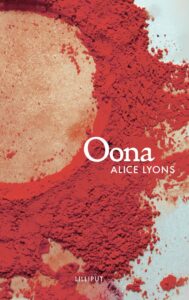
FRONT COVER OF OONA BY ALICE LYONS.
PUBLISHED WITH LILLIPUT 2020.
Hi Alice. Thanks for agreeing to this interview. To start, I wanted to ask you about your route into writing. Prior to Oona you were known mostly as a poet. However, I believe you also spent some time in academia?
I started to write poetry at Connecticut College after my first encounters with poems in English classes. Writing critically about Hopkins, Berryman and Dylan Thomas, I discovered the world of analogy was far more natural to me than ‘logy’. I wrote some worthwhile poems after spending a term in Dublin in 1980. They showed me that reticence was a powerful expressive quality in writing and, to me, restraint was to poetry as windiness was to prose. Soon after, I ceased writing poems altogether for 20 years until I had fully put down my roots here in Ireland. In those years, I did MAs in sociolinguistics and fine art. I painted and taught English to refugees and foreign students. In 2002, the poems returned to me and, thankfully, keep returning.
“I wanted to write about internal dysfluency, about not being able to hear one’s inner voice, what some people call their ‘gut’.”
Formal experimentation has been a common feature of your work, as have unconventional modes of distribution. I’m thinking specifically of larger scale works like your Staircase Poems, which were displayed a month at a time on the main stairwell of the Dock Arts Centre throughout the first year of its existence. Having moved fluidly between the worlds of poetry, film and visual art for some time, I wonder what was it that attracted you to the novel form?
I didn’t set out to write a novel, and I’m still not convinced that Oona is a novel in the conventional sense. I wanted to write about internal dysfluency, about not being able to hear one’s inner voice, what some people call their ‘gut’. Conversely, I also wanted to write about the beautiful fluency I observed practiced by so many people in rural Ireland, how speech was a kind of social cohesion. I began with these writing desires, and the form, such as it is, was hammered out in the writing process. I don’t stay in my lane in creative practice, and I don’t worry about it anymore. I love what Barnett Newman says, another analogy: ‘Aesthetics is to artists as ornithology is to birds’.
In an Irish Times article about the writing of Oona you mentioned that you didn’t set out to write a novel with a linguistic constraint but rather “the O eschewal evolved from the writing.” Can you talk a little bit about this process of discovery? How far into writing the novel were you when you decided to abandon the letter O?
I was about two-thirds of the way through the writing of Oona when I decided to try writing it without the letter ‘o’. What I had written up to then was decent prose, but it felt flat, like the ‘wagon of elaborate prose’ that Czesław Miłosz speaks of when he writes about poems: ‘One clear stanza can take more weight / Than a whole wagon of elaborate prose’. The ‘o’ eschewal allowed me to approach each short chapter as a stanza, to put it under more linguistic pressure. For what it’s worth.

Headshot of Alice Lyons
Oona is filled with references to painting and the visual arts. Given your background in that world, I wondered how involved you were in designing the book for publication? I noticed you are credited with the cover image, for example.
Lilliput Press were politely indulgent of my wish to have input into the book cover. There was a design process in which I’m sure I meddled more than they would have liked. After to-ing and fro-ing with some fairly abstract designs, Antony Farrell asked me to go back to my desk, to try to get the image from ‘the real world’, as he put it. I did. I dumped a jar of Venetian red pigment out on my writing table, took a photo, and that was it. We had the cover. I’m so very pleased with the care that Lilliput took in the design, editing and printing of the book. They care about publishing books properly, using rigorous editors and copyeditors, meticulous typesetters and printers. It means a lot to me.
“…the Novel Fair organisers gave us good coaching on pitching and synopses, so I had some semblance of an idea of how to be at the event.”
Oona was a winner in the IWC Novel Fair back in 2019 but it still stands out from other past winners on account of its experimentalism. Can I ask what it was like pitching it to agents and publishers? Did you have much experience with this beforehand?
I was surprised it was chosen because it’s an unconventional work, happy and surprised. I had only one previous experience pitching it to an agent in Boston, and it was excruciating because I had no idea how to present the book or myself. I was vague and just an idiot, really. Wasted her time. That’s why I thought the Novel Fair was a great idea: the book would lead the process rather than me. If the book opened the door, then I would work on how to present myself to the publishers and agents. In fact, the Novel Fair organisers gave us good coaching on pitching and synopses, so I had some semblance of an idea of how to be at the event. But I still think that it has to be my writing rather than the grace, or not, of my personality that will do the business.
One of the most common questions we get from aspiring Novel Fair applicants is which section of their manuscript to enter as their 10,000-word extract. Given how fragmented it is, how did you decide which portion of Oona you wanted to submit?
I included a big chunk of the beginning to orient the reader, and then I chose a chunk from the New Jersey section and the Irish section so they could see the geographic reach and the various ways of conjuring place.
In the aforementioned Irish Times article you described the process of writing Oona as having felt “more like stumbling than executing a plan.” What advice would you give to aspiring Novel Fair applicants who struggle to shape or refine their work as they move through successive drafts?
Every creative project has its own process of unfolding, some more straightforward than others. My advice would be, don’t rush. Let writing take the time it needs. Revise, cut, edit out every extraneous word or scene. Stay true to your creative vision. Don’t let market research or ideas of accessibility dictate any decision. If your book is difficult, let it be difficult. Get a trusted reader to give honest and forthright reports on your work. Finish your book by setting completion goals for yourself. The Novel Fair is a very useful deadline to have in your sights.
You’ve written that you “began to dread coming to the end of writing Oona. How could I ever enjoy writing again without such a constraint?” What was it like returning to prose-writing after submitting to such a rigorous process for so long? And, can we expect another prose-work from you soon?
Dread, yes. There’s always that fear after a big project is finished. Will what follows be as rich and engaging? Since publishing Oona, I’ve been writing poems and prose, and they’re working off each other in ways that I find exciting and difficult. My perspective is this: prose is a subset of the universal set, which is poetry. That is what is leading the current work.
Oona is available now from Lilliput Press.
How to apply to the IWC Novel Fair
The Irish Writers Centre Novel Fair, now in its twelfth year, is an annual competition that introduces twelve up-and-coming writers to top publishers and literary agents, giving novelists the opportunity to bypass the slush pile, pitch their ideas and place their synopsis and sample chapters directly into the hands of publishers and agents.
Submissions to the Fair will be open throughout the month of September 2023 and will require applicants to submit a 10,000-word extract of the novel, as well as a 300 word plot synopsis. Entries are welcome from anywhere in the world. The twelve successful applicants will be informed at the beginning of December – giving them a week to submit their full 50,000 word manuscripts – and will be given the opportunity to attend a day-long ‘How to Pitch Your Novel’ seminar in advance of the Fair itself, which will take place in the spring.
Find out more about the Novel Fair here.

